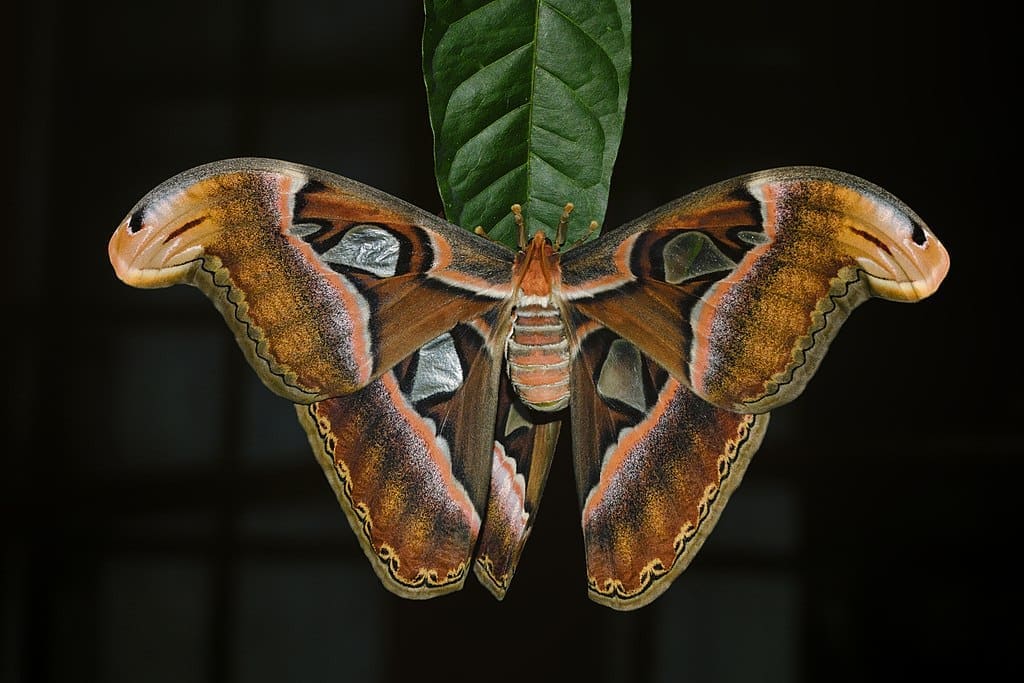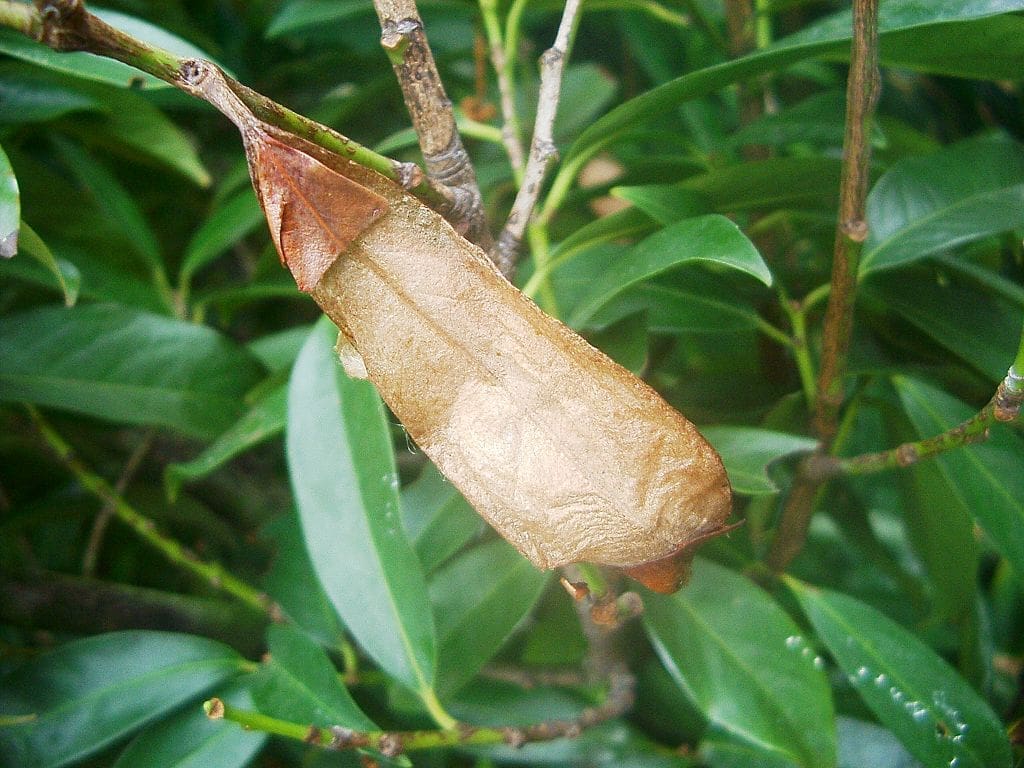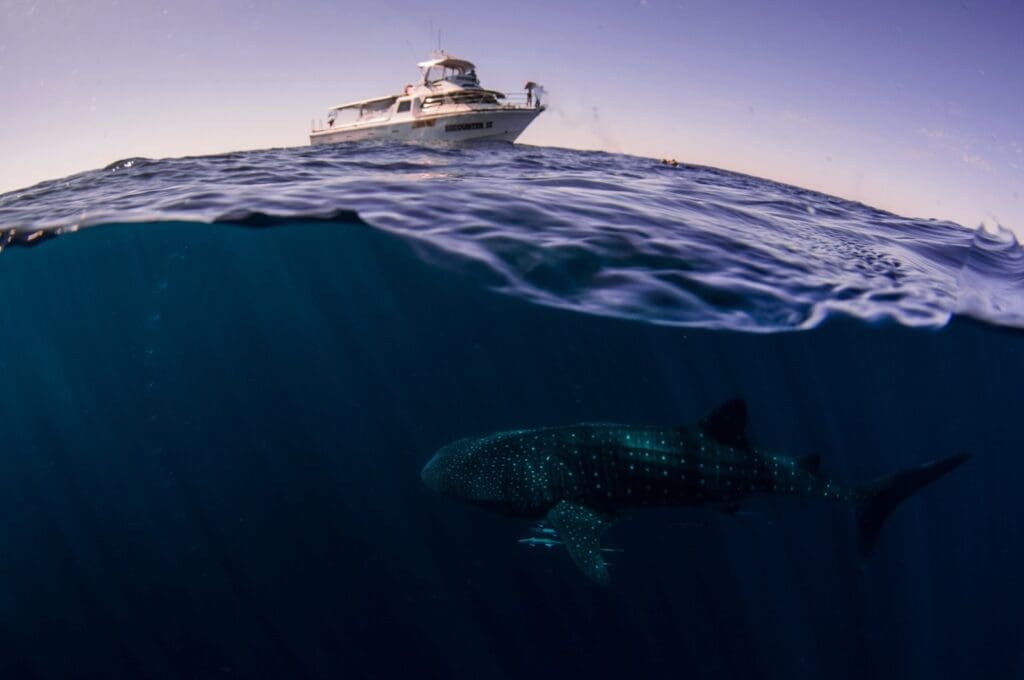What creature has no mouth, is known for colorful patterns, and is famous for mimicking a deadly predator?
The Atlas Moth!

The insect with a reputation
Atlas moths live throughout India, China, Indonesia and Malaysia. This wide distribution covers secondary forests, shrublands, tropical areas, and rainforests.
The name “Atlas” likely came from the moth’s vibrant, unique patterns that resemble geological formations shown on a map, or atlas. Another theory behind the name comes from Greek mythology. According to myth, Atlas was a Titan who was ordered by Zeus to hold the sky on his shoulders as punishment for rebelling against the gods. A big task like that requires a big titan, so “Atlas” Moth could refer to the large size of this creature.
The Atlas moth is the largest moth due to its massive wing surface area. Females are larger than males, and they can measure up to 12 in, reaching a surface area of 62 in2 – that’s one huge moth!
The last theory behind the Atlas moth’s name is the Cantonese translation, which means “snake’s head moth,” and that refers to the distinct snake face shape on the tip of the moth’s wings. Can you see it?
The Atlas moth uses this snake head pattern to its advantage. If the moth feels threatened while in a resting position, it will quickly begin flapping its wings to mimic a moving snake head. I’m sure snakes must appreciate the Atlas moth’s methods. After all, mimicry is the sincerest form of flattery.

Gone Too Soon
Sadly, our beloved moth has a short lifespan. After emerging from their cocoons, they live for two weeks. This is just enough time to find a mate and reproduce. Atlas moths are so busy with these two tasks during that time period that they don’t even eat. They depend solely on the energy they stored during their caterpillar, or larva, stage. The moth has so evolved to this fasting lifestyle that it doesn’t even have a mouth!
To get ready for the moth stage, atlas moth caterpillars will devour citrus fruits, cinnamon, guava, evergreen tree leaves and willow. The caterpillars have their own defense system, too. When threatened, they spray a potent, foul-smelling substance that can reach up to 50 cm. So don’t mess with these caterpillars!

How are human activities impacting Atlas Moths?
People throughout the countries the atlas moth lives in admire this creature. In India, their cocoons are used to create a silk called fagara. In Taiwan, local people collect the cocoons and create a variety of products. Purses are made by simply adding a zipper to nature’s design.
Although local communities have been practicing sustainable cocoon-harvesting practices for some time, throughout recent decades the moth itself has been targeted- to be sold alive as a pet, or dead as a display item. Perhaps we can learn from this moth by showing our admiration through mimicry, rather than taking them out of their natural habitat.
Wishfully yours,
Tania

Tania graduated from Tufts University with a Master of Science in Animals and Public Policy. Her academic research projects focused on wildlife conservation efforts, and the impacts that human activities have on wild habitats. As a writer and activist, Tania emphasizes the connections between planet, human, and animal health. She is a co-founder of the podcast Closing the Gap, and works on outreach and communications for Sustainable Harvest International. She loves hiking, snorkeling, and advocating for social justice.



